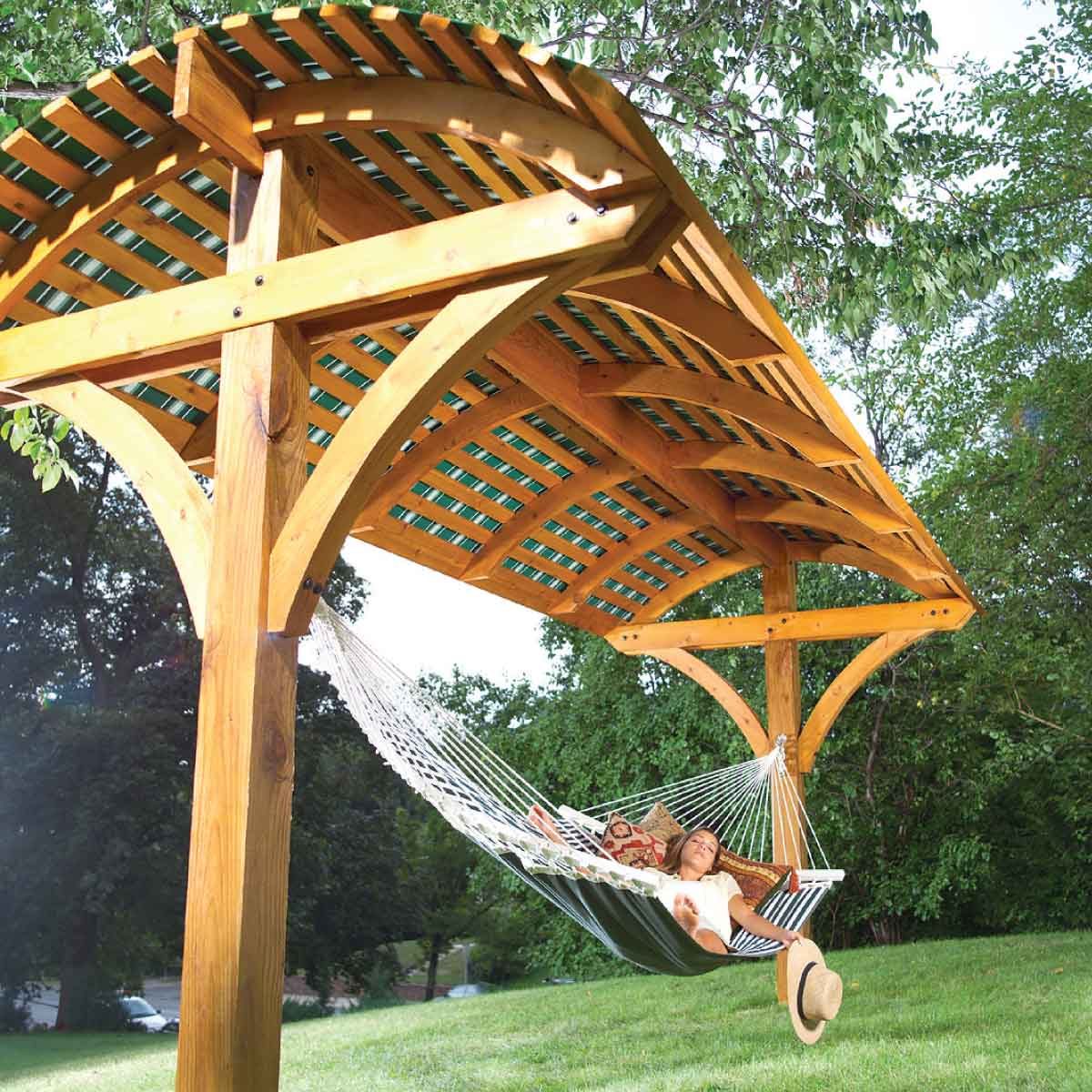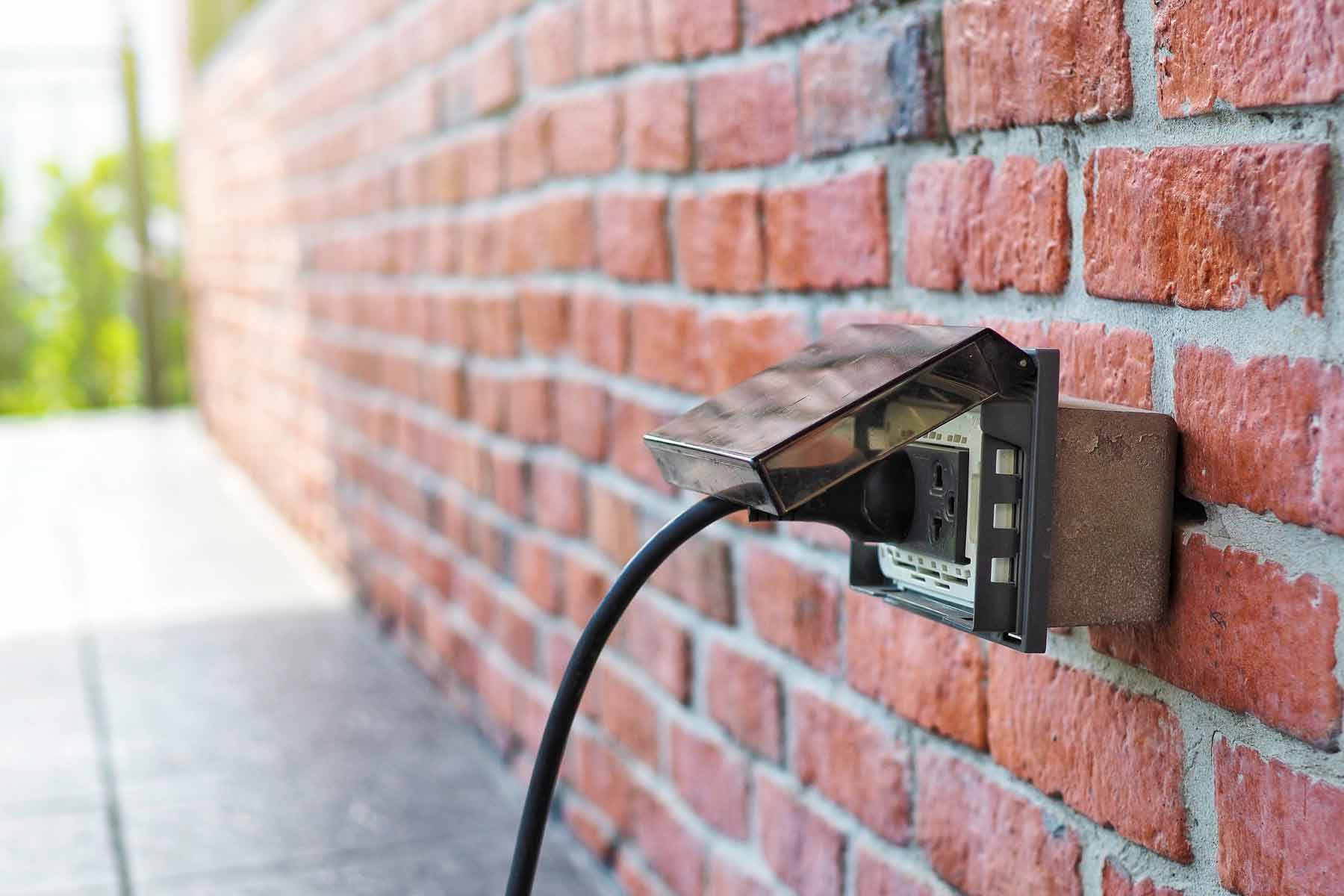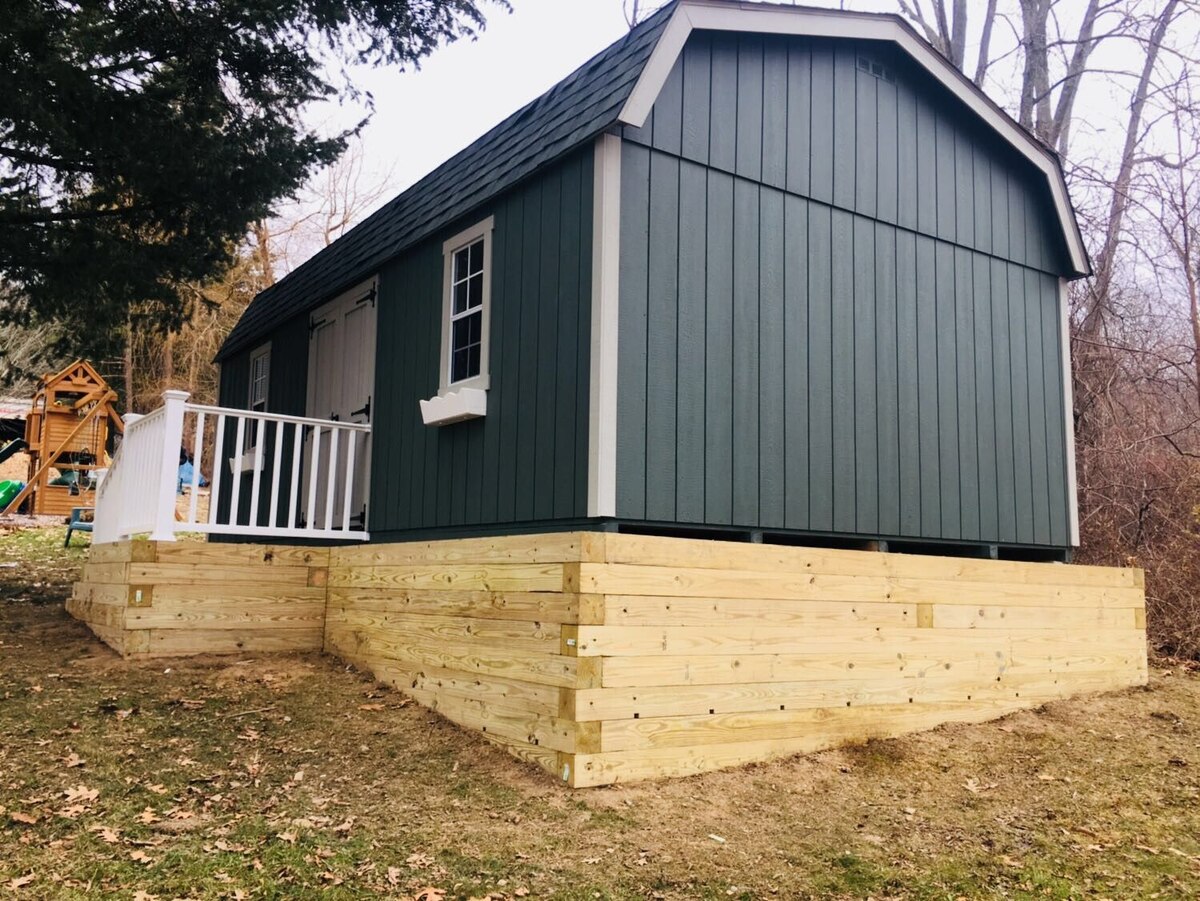Home>Furniture>Outdoor Furniture>How High Should A Hammock Be Off The Ground


Outdoor Furniture
How High Should A Hammock Be Off The Ground
Modified: March 16, 2024
Discover the perfect height for your outdoor hammock. Find out how high your hammock should be off the ground for optimal relaxation and comfort.
(Many of the links in this article redirect to a specific reviewed product. Your purchase of these products through affiliate links helps to generate commission for Storables.com, at no extra cost. Learn more)
Introduction
When it comes to enjoying the great outdoors, few things are as relaxing and comfortable as lounging in a hammock. Whether you’re camping, backyard lounging, or just taking a peaceful break in nature, a hammock provides a serene and rejuvenating experience. However, to fully enjoy your hammock and ensure optimal comfort and safety, it’s crucial to hang it at the right height off the ground.
In this article, we will explore the factors to consider when determining the ideal height for your hammock. We will also discuss different hanging options and important safety considerations to keep in mind. So, let’s dive in and discover the secrets to the perfect hammock setup!
Key Takeaways:
- Find the sweet spot: Hang your hammock 18-24 inches off the ground with a 6-8 inch sag for a cozy and comfortable experience. Adjust the height to suit your personal preference and hammock type.
- Safety first: Prioritize safety by checking weight limits, securing attachment points, inspecting for damage, and supervising children. Choose the right hanging method for a stable and enjoyable hammock experience.
Read more: How High Should A Shed Be Off The Ground
Factors to Consider
When determining the height at which to hang your hammock, several factors come into play. Here are the key considerations to keep in mind:
- Hammock Type: The type of hammock you have will influence the recommended hanging height. Traditional rope hammocks tend to sag more and may require a higher hanging point compared to hammocks made of sturdy materials like nylon or polyester.
- Hammock Length: The length of your hammock is another important factor. Longer hammocks typically require a higher hanging point, as they need more space to achieve a comfortable sag.
- Purpose: The intended use of your hammock also plays a role. If you plan on using it for relaxing and occasional napping, a lower height may be suitable. However, if you intend to sleep overnight or engage in more active activities like reading or working, a higher hanging height may be preferable.
- Installation Location: Where you plan to hang your hammock will significantly impact the ideal height. If you’re suspending it between two trees, you’ll need to consider the distance between them and any obstacles like branches. For indoor or patio setups, the height of the anchor points or available support structures will dictate the hanging height.
- User’s Preference: Finally, it’s essential to take into account personal preference and comfort. Some individuals prefer a deeper sag in their hammock, while others prefer a more taut and upright position. Experiment with different hanging heights to find the sweet spot that provides maximum comfort for you.
By considering these factors, you can determine the most suitable height for your hammock that will ensure both comfort and safety.
Ideal Height for Hammocks
While the ideal height for hanging a hammock can vary depending on the factors mentioned above, there are some general guidelines to consider:
- Distance off the Ground: In general, it’s recommended to hang your hammock with the bottom at a height of about 18 to 24 inches (45 to 60 centimeters) above the ground. This allows for a comfortable entry and exit from the hammock while still maintaining a relaxed and cozy position.
- Sag: To achieve the perfect amount of sag, aim for a distance of approximately 6 to 8 inches (15 to 20 centimeters) between the lowest point of the hammock and the ground when no one is in it. This allows for a comfortable curve once you’re lying in the hammock.
- Tautness: Some people prefer a taut hammock, where the fabric is almost parallel to the ground when they are lying in it. In this case, you may want to increase the hanging height slightly to achieve the desired level of tautness.
Remember that these are general guidelines and can be adjusted based on personal preference and hammock type. It’s always a good idea to test the hanging height before committing to a permanent installation. Take the time to adjust and fine-tune the height until you find the most comfortable and relaxing position that suits your needs.
Additionally, consider the weight capacity of your hammock and the anchor points you are using. Ensure that the supports can withstand the combined weight of the hammock and the individuals who will be using it.
Now that you have a better understanding of the ideal hanging height for your hammock, let’s explore some popular options for hanging your outdoor oasis.
Aim for a height of 18 inches to 24 inches off the ground for a comfortable and safe hammock experience. This allows for easy entry and exit while preventing potential injuries from falling.
Hammock Hanging Options
There are various options available when it comes to hanging your hammock. Here are a few popular methods:
- Tree Straps: Tree straps are a versatile and convenient option for hanging a hammock between two trees. They are wide, durable straps that wrap around the tree trunk, eliminating the need for hooks or screws. Tree straps are adjustable, allowing you to easily change the hanging height and tension of your hammock.
- Hammock Stand: If you don’t have suitable trees or want the flexibility to move your hammock around, a hammock stand is an excellent choice. These stands come in various sizes and designs, and they provide a sturdy and stable base for your hammock. Make sure to check the weight capacity and dimensions of the stand to ensure it can accommodate your hammock.
- Wall Mounts and Anchor Points: For indoor or patio hammock setups, wall mounts or anchor points can be installed to hang your hammock. These fixtures need to be securely attached to load-bearing walls or strong support structures. Be sure to follow the manufacturer’s instructions and use appropriate hardware to ensure the safety and stability of your hammock.
- Hammock Posts: Hammock posts are freestanding structures specifically designed for hanging hammocks. These posts can be set up in your backyard or any open space and provide a convenient solution for hammock relaxation. Just like hammock stands, make sure the posts have the weight capacity needed for your hammock.
- Other Hanging Hardware: There are various hooks, carabiners, and suspension systems available that can be used to hang a hammock. These options are often used in combination with tree straps or other hanging methods to provide additional flexibility and adjustability.
Consider the specific requirements of your hammock and the available space when choosing the best hanging option. It’s important to ensure that the method you choose is safe, secure, and appropriate for your particular environment.
Now that you know how to hang your hammock and the different options available, let’s explore some important safety considerations.
Safety Considerations
While hammocks are a source of relaxation and enjoyment, it’s crucial to prioritize safety when setting up and using them. Here are some essential safety considerations to keep in mind:
- Hammock Weight Capacity: Always check the weight capacity of your hammock and ensure that it can support the combined weight of the individuals who will be using it. Exceeding the weight limit can put undue stress on the hammock and increase the risk of failure.
- Secure Attachment Points: Whether you’re using trees, anchor points, or stands, ensure that your hammock is securely attached. Check the stability of the anchor points, and make sure they are strong enough to support the weight and movement of the hammock. Use appropriate hardware and follow manufacturer recommendations for installation.
- Inspect the Hammock: Before each use, inspect your hammock and its components for any signs of wear, damage, or fraying. Check the stitching, ropes, or straps for any weak spots. If you notice any defects, it’s best to replace the hammock or necessary parts before using it again.
- Proper Hanging Height: As mentioned earlier, ensure that your hammock is hung at an appropriate height from the ground. A height that is too high can increase the risk of injury if someone falls out of the hammock, while a height that is too low can make it difficult to get in and out comfortably.
- Clear the Area: Remove any obstacles or hazards from the area around your hammock setup. This includes rocks, sharp objects, low-hanging branches, or other potential dangers that could cause injury if someone accidentally comes into contact with them.
- Supervise Children: If children will be using the hammock, it’s important to supervise them at all times. Educate them on how to correctly enter, exit, and use the hammock safely. Consider using a child-sized hammock with appropriate weight limits for added safety.
- Weather Conditions: Be mindful of weather conditions when using your hammock. Avoid hanging it during storms, high winds, or severe weather events that could compromise the stability of the setup. Remove the hammock and take it indoors during inclement weather to prevent damage.
By following these safety considerations, you can minimize the risk of accidents and ensure a safe and enjoyable hammock experience for yourself and others.
Conclusion
Hanging a hammock at the right height off the ground is essential for both comfort and safety. Factors such as hammock type, length, intended use, installation location, and personal preference all play a role in determining the ideal hanging height. By considering these factors, you can achieve the perfect balance of relaxation and support.
When determining the height, aim for the hammock to be approximately 18 to 24 inches above the ground, with a sag of 6 to 8 inches when unoccupied. Adjust the hanging height to achieve the desired level of tautness and comfort. Remember to consider the weight capacity of your hammock and the stability of the hanging method or anchor points you use.
There are various options for hanging your hammock, including tree straps, hammock stands, wall mounts, and hammock posts. Choose the method that best suits your environment and provides the stability and convenience you need.
Always prioritize safety when setting up and using your hammock. Check weight limits, ensure secure attachment, inspect your hammock for any damage, and clear the area of potential hazards. Supervise children when they are using the hammock and be mindful of weather conditions that could compromise the setup.
Now that you are equipped with the knowledge of how to determine the ideal hanging height, different hanging options, and important safety considerations, you are ready to set up your hammock and enjoy the ultimate relaxation in the great outdoors or even in your own backyard.
So go ahead, find the perfect spot, hang your hammock, and immerse yourself in the blissful comfort it offers.
Frequently Asked Questions about How High Should A Hammock Be Off The Ground
Was this page helpful?
At Storables.com, we guarantee accurate and reliable information. Our content, validated by Expert Board Contributors, is crafted following stringent Editorial Policies. We're committed to providing you with well-researched, expert-backed insights for all your informational needs.















0 thoughts on “How High Should A Hammock Be Off The Ground”